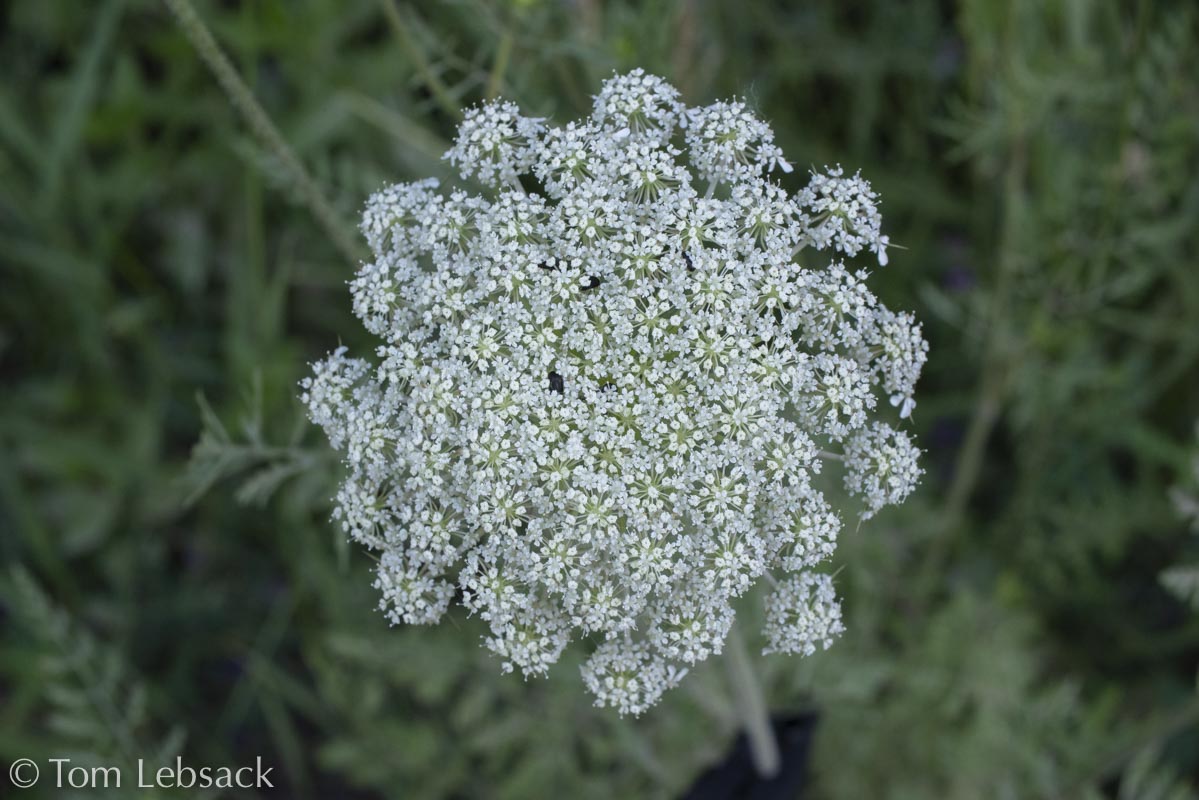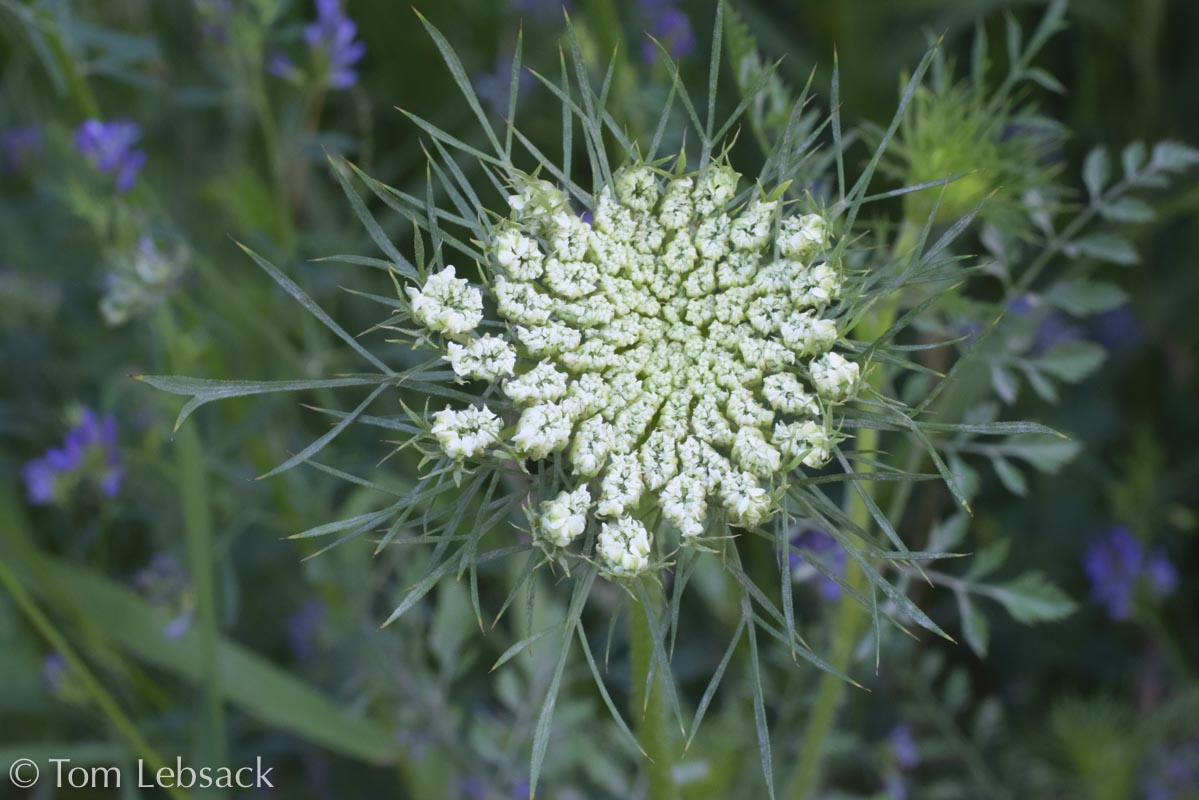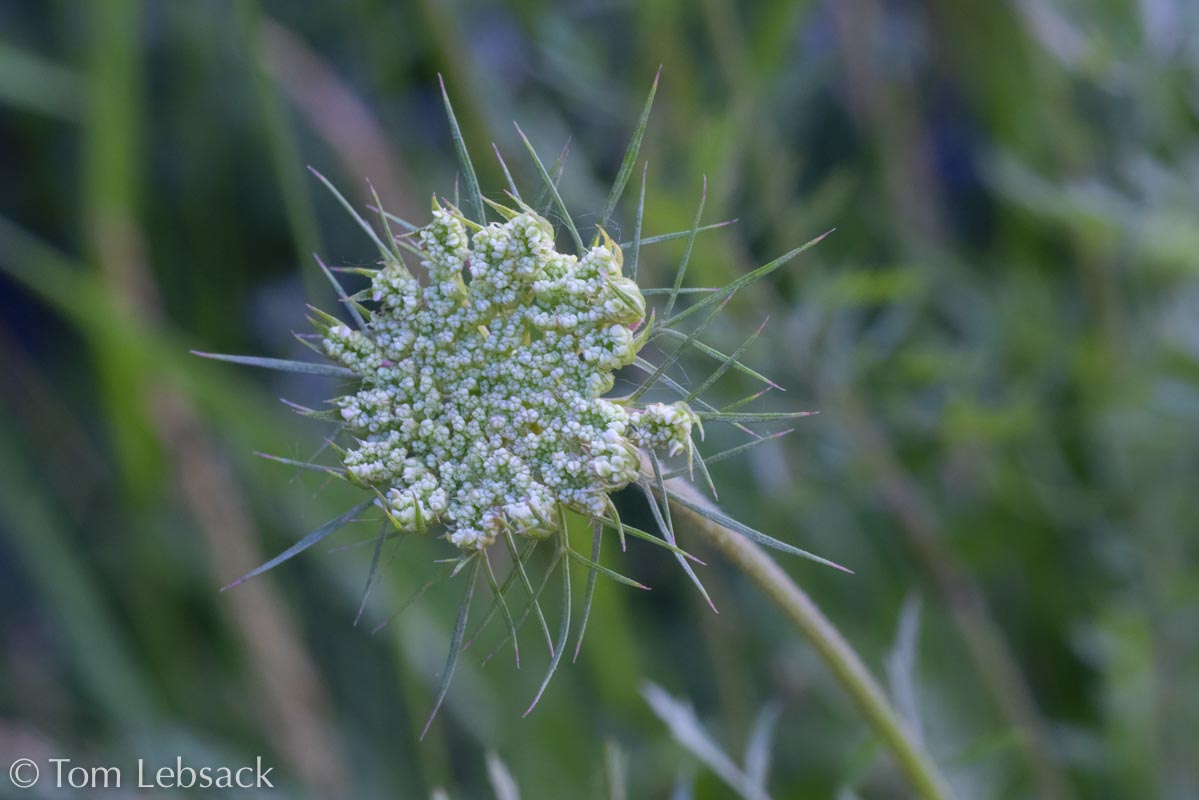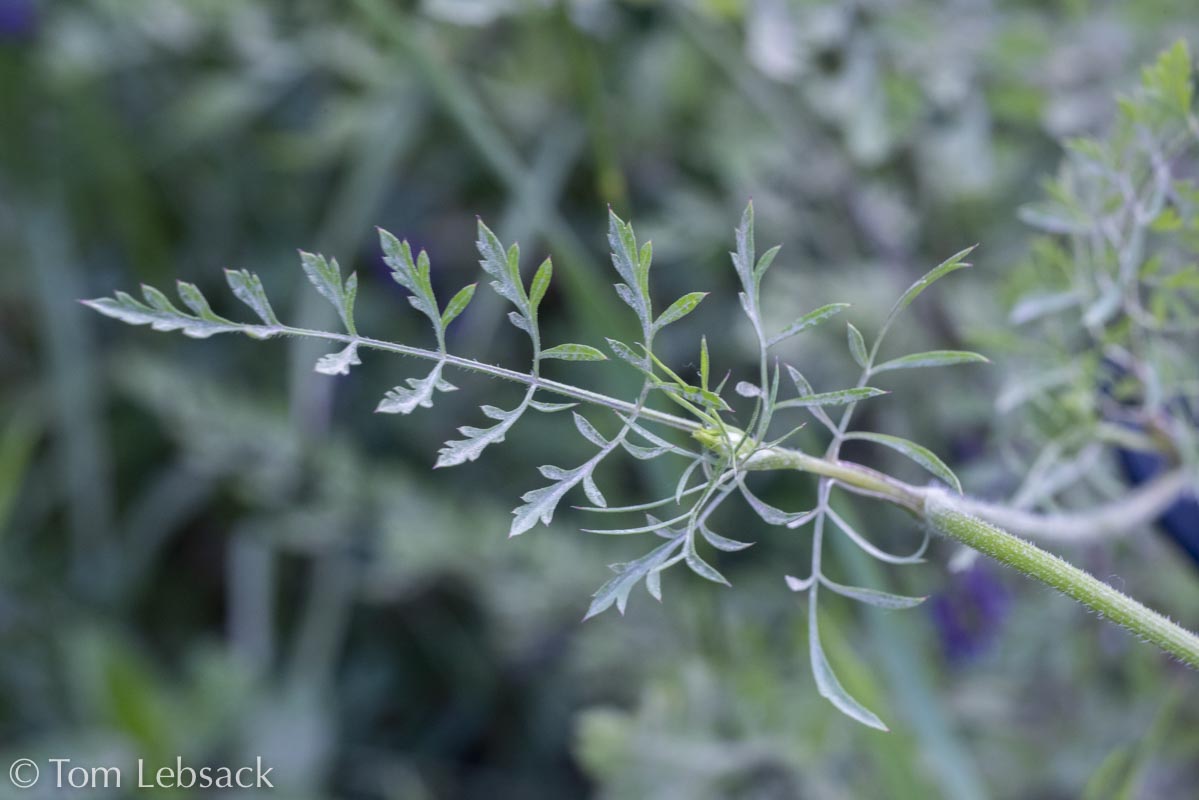Daucus carota
(Queen Anne’s Lace)
| Scientific Name | Daucus carota | USDA PLANTS Symbol | DACA6 |
| Common Name | Queen Anne's Lace | ITIS Taxonomic Serial No. | 29477 |
| Family | Apiaceae (Parsley) | SEINet Reference |
Click Here |
| Description |
Life zones and habitat: Plains to foothills (5000 to 7500 ft); along streams and moist areas in meadows and slopes. Plant: Erect biennial with a rosette of basal leaves during the first year and flowering stalks the second; second year plants 2 to 5 ft. tall; central stem of second year plants somewhat branched, light green, sometimes tinted red, with vertical veins, nearly smooth to slightly hairy. Leaves: Overall appearance of compound leaves rather lacy or fern-like; blades bipinnate-pinnatifid or pinnate-bipinnatifid 5 inches long and 2-1/2 inches across overall with small ultimate segments 1/8 to 3/8-inch long, oblong-linear or narrowly rhombic in shape; margins sometimes sparsely ciliate; basal rosette leaves on long, slender petioles; stem leaves alternate. Inflorescence: Solitary compound umbels of very small flowers 2 to 5 inches across on long naked stalks; compound umbel has 20 to 90 umbellets, and each umbellet has 15 to 60 flowers; each flower less than 1/8-inch across with 5 white petals with incurved tips; small number of linear bractlets below each umbellet and several bracts below the main umbel that are pinnatifid with linear lobes. Bloom Period: July to September. References: "Flora of Colorado" by Jennifer Ackerfield and Illinois Wildflowers. |
BONAP Distribution Map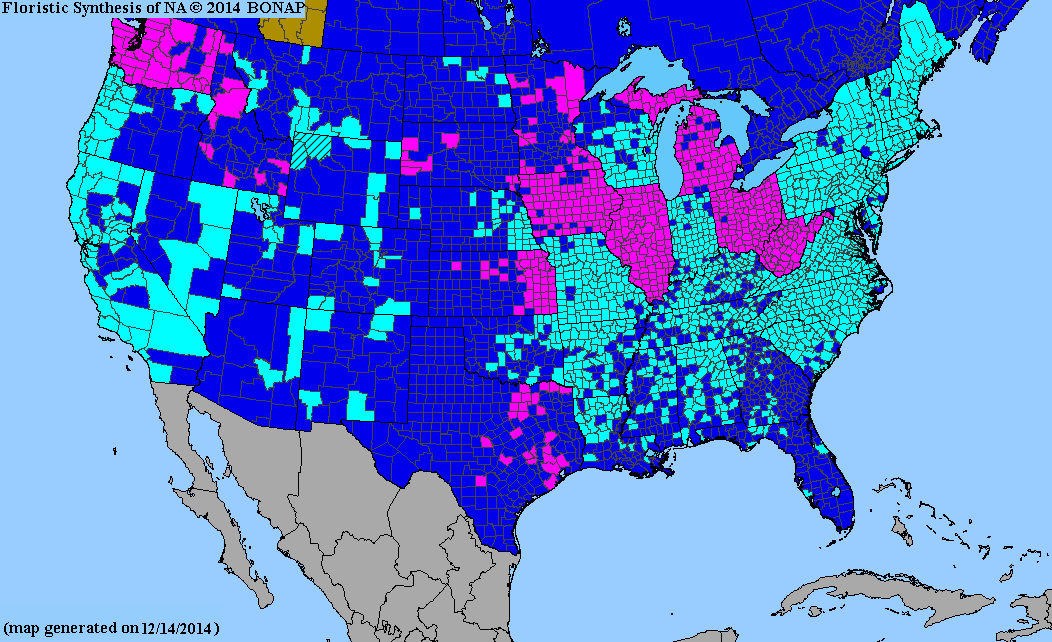
Map Color Key |
Colorado Status: Introduced |
© Tom Lebsack 2025
Banner photo: Castilleja rhexifolia and a brewing storm over the San Juan Mountains
I try to provide accurate, up-to-date, and relevant information, but cannot guarantee the completeness or accuracy of any information presented on this website. I use authoritative references to insure high standards of accuracy and review and update the information frequently.
